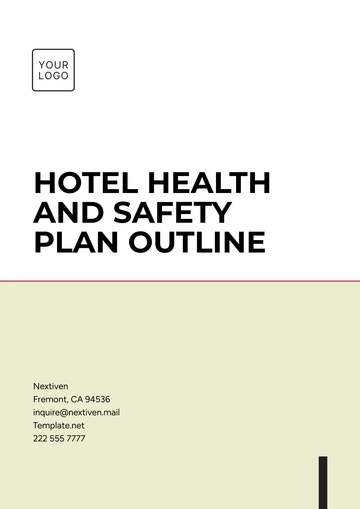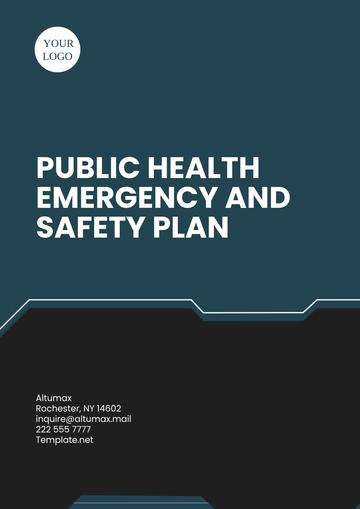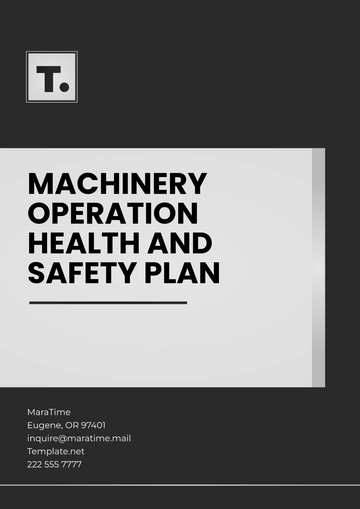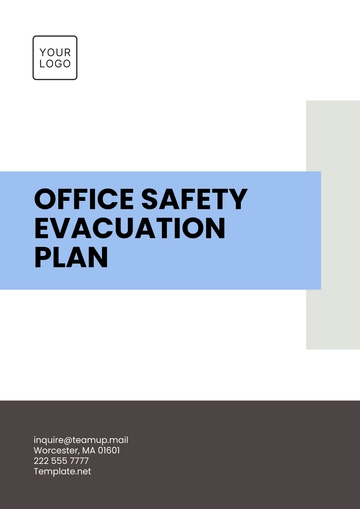Free Fire Safety Plan
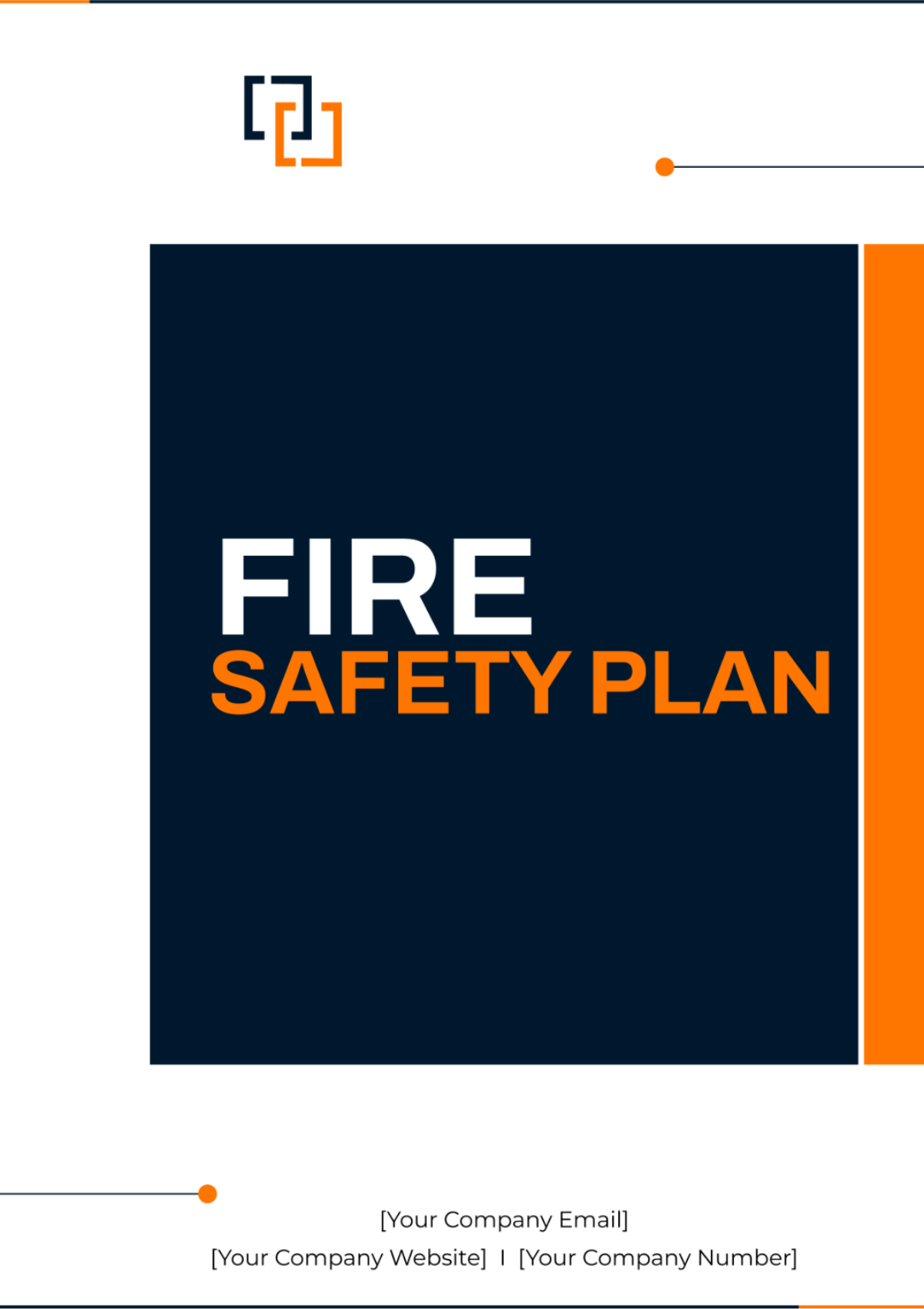
Written by: [Your Name]
I. Introduction
The Fire Safety Plan for [Your Company Name] establishes essential protocols to prevent and respond to fire emergencies within our premises. Our paramount concern is the safety and welfare of all occupants. This plan serves as a crucial guide to ensure the implementation of effective fire safety measures, facilitating a swift and orderly response in the event of an emergency.
II. Purpose of the Fire Safety Plan
The Fire Safety Plan serves several pivotal objectives:
Prevention of Fire Incidents: By proactively identifying potential fire hazards and implementing preventive measures, we aim to minimize the occurrence of fire incidents.
Effective Response to Fire Emergencies: This plan delineates clear procedures for responding to fire emergencies, ensuring the safety and orderly evacuation of all occupants.
Promotion of Fire Safety Awareness: Through comprehensive education and training initiatives, we endeavor to cultivate a culture of fire safety awareness among all building occupants.
Compliance with Fire Safety Regulations: We are steadfast in adhering to all pertinent fire safety regulations and standards, thereby upholding legal obligations and fostering best practices in fire safety management.
III. Issuers and Users of the Fire Safety Plan
A. Issuers
Fire Safety Plans are issued by:
Fire Departments
Organizational Safety Officers
B. Users/Recipients
Fire Safety Plans are utilized by:
Building Occupants
Safety Personnel
Fire Wardens
IV. Common Use Cases
Fire Safety Plans are typically applied in the following scenarios:
Fire Drills: Regularly conducting fire drills to simulate emergency evacuation procedures.
Emergency Evacuation Procedures: Outlining precise protocols for evacuating the building safely during a fire emergency.
Compliance with Fire Safety Regulations: Ensuring strict adherence to fire safety regulations and standards prescribed by regulatory authorities.
V. Responsibilities and Roles
A. Management Responsibilities
The management team bears the following responsibilities:
Overseeing the implementation of fire safety measures outlined in the plan.
Allocating resources and providing support for fire safety initiatives.
Ensuring strict compliance with fire safety regulations and standards.
B. Occupant Responsibilities
All building occupants are tasked with:
Familiarizing themselves with the fire safety procedures delineated in the plan.
Actively participating in fire drills and evacuation exercises.
Following directives from designated fire wardens during fire emergencies.
VI. Fire Prevention Measures
A. Hazard Identification
Routine inspections will be conducted to identify potential fire hazards, encompassing:
Examination of electrical wiring systems
Assessment of combustible materials storage
Inspection of fire exit pathways
Hazard Type | Inspection Frequency | Responsible Party |
|---|---|---|
Electrical Wiring | Monthly | Safety Officer |
Combustible Materials | Quarterly | Facilities Manager |
Fire Exits | Bi-annual | Fire Wardens |
B. Fire Suppression Systems
Our premises are equipped with a comprehensive array of fire suppression systems, including:
Automatic sprinkler systems
Strategically positioned fire extinguishers
Smoke detectors and fire alarms
VII. Emergency Response Procedures
A. Fire Alarm Activation
In the event of a fire, the fire alarm system will be activated, instigating the following actions:
Promptly alerting occupants to evacuate the building.
Immediately notify the fire department for swift intervention.
B. Evacuation Plan
The evacuation plan encompasses the following steps:
Swiftly evacuating the building via the nearest exit.
Assisting individuals requiring aid, if feasible.
Assembling at the designated assembly point outside the building.
VIII. Training and Education
A. Fire Safety Training
All occupants will receive comprehensive fire safety training, covering:
Identification of fire hazards
Proper utilization of fire extinguishers
Evacuation protocols
B. Fire Warden Training
Designated fire wardens will undergo specialized training to effectively discharge their duties, including:
Leading evacuation procedures during fire emergencies
Conducting headcounts to ensure the safe evacuation of all occupants
IX. Review and Updates
This fire safety plan will undergo regular reviews to:
Ensure full compliance with fire safety regulations and standards.
Incorporate feedback from occupants and fire safety professionals.
Address any modifications to building layout or operations that may impact fire safety protocols.
X. Conclusion
In conclusion, the Fire Safety Plan for [Your Company Name] is indispensable for safeguarding the lives and assets of all building occupants. By meticulously implementing the protocols outlined in this plan and fostering active engagement from all occupants, we can mitigate the risk of fire incidents and mount an effective response in the event of an emergency. Let us collectively commit to upholding a culture of fire safety awareness and preparedness.
- 100% Customizable, free editor
- Access 1 Million+ Templates, photo’s & graphics
- Download or share as a template
- Click and replace photos, graphics, text, backgrounds
- Resize, crop, AI write & more
- Access advanced editor
Enhance fire safety with a customizable Fire Safety Plan Template from Template.net. This editable template, available for modification in our AI Tool, ensures your fire safety procedures are clearly defined and accessible.
You may also like
- Finance Plan
- Construction Plan
- Sales Plan
- Development Plan
- Career Plan
- Budget Plan
- HR Plan
- Education Plan
- Transition Plan
- Work Plan
- Training Plan
- Communication Plan
- Operation Plan
- Health And Safety Plan
- Strategy Plan
- Professional Development Plan
- Advertising Plan
- Risk Management Plan
- Restaurant Plan
- School Plan
- Nursing Home Patient Care Plan
- Nursing Care Plan
- Plan Event
- Startup Plan
- Social Media Plan
- Staffing Plan
- Annual Plan
- Content Plan
- Payment Plan
- Implementation Plan
- Hotel Plan
- Workout Plan
- Accounting Plan
- Campaign Plan
- Essay Plan
- 30 60 90 Day Plan
- Research Plan
- Recruitment Plan
- 90 Day Plan
- Quarterly Plan
- Emergency Plan
- 5 Year Plan
- Gym Plan
- Personal Plan
- IT and Software Plan
- Treatment Plan
- Real Estate Plan
- Law Firm Plan
- Healthcare Plan
- Improvement Plan
- Media Plan
- 5 Year Business Plan
- Learning Plan
- Marketing Campaign Plan
- Travel Agency Plan
- Cleaning Services Plan
- Interior Design Plan
- Performance Plan
- PR Plan
- Birth Plan
- Life Plan
- SEO Plan
- Disaster Recovery Plan
- Continuity Plan
- Launch Plan
- Legal Plan
- Behavior Plan
- Performance Improvement Plan
- Salon Plan
- Security Plan
- Security Management Plan
- Employee Development Plan
- Quality Plan
- Service Improvement Plan
- Growth Plan
- Incident Response Plan
- Basketball Plan
- Emergency Action Plan
- Product Launch Plan
- Spa Plan
- Employee Training Plan
- Data Analysis Plan
- Employee Action Plan
- Territory Plan
- Audit Plan
- Classroom Plan
- Activity Plan
- Parenting Plan
- Care Plan
- Project Execution Plan
- Exercise Plan
- Internship Plan
- Software Development Plan
- Continuous Improvement Plan
- Leave Plan
- 90 Day Sales Plan
- Advertising Agency Plan
- Employee Transition Plan
- Smart Action Plan
- Workplace Safety Plan
- Behavior Change Plan
- Contingency Plan
- Continuity of Operations Plan
- Health Plan
- Quality Control Plan
- Self Plan
- Sports Development Plan
- Change Management Plan
- Ecommerce Plan
- Personal Financial Plan
- Process Improvement Plan
- 30-60-90 Day Sales Plan
- Crisis Management Plan
- Engagement Plan
- Execution Plan
- Pandemic Plan
- Quality Assurance Plan
- Service Continuity Plan
- Agile Project Plan
- Fundraising Plan
- Job Transition Plan
- Asset Maintenance Plan
- Maintenance Plan
- Software Test Plan
- Staff Training and Development Plan
- 3 Year Plan
- Brand Activation Plan
- Release Plan
- Resource Plan
- Risk Mitigation Plan
- Teacher Plan
- 30 60 90 Day Plan for New Manager
- Food Safety Plan
- Food Truck Plan
- Hiring Plan
- Quality Management Plan
- Wellness Plan
- Behavior Intervention Plan
- Bonus Plan
- Investment Plan
- Maternity Leave Plan
- Pandemic Response Plan
- Succession Planning
- Coaching Plan
- Configuration Management Plan
- Remote Work Plan
- Self Care Plan
- Teaching Plan
- 100-Day Plan
- HACCP Plan
- Student Plan
- Sustainability Plan
- 30 60 90 Day Plan for Interview
- Access Plan
- Site Specific Safety Plan








